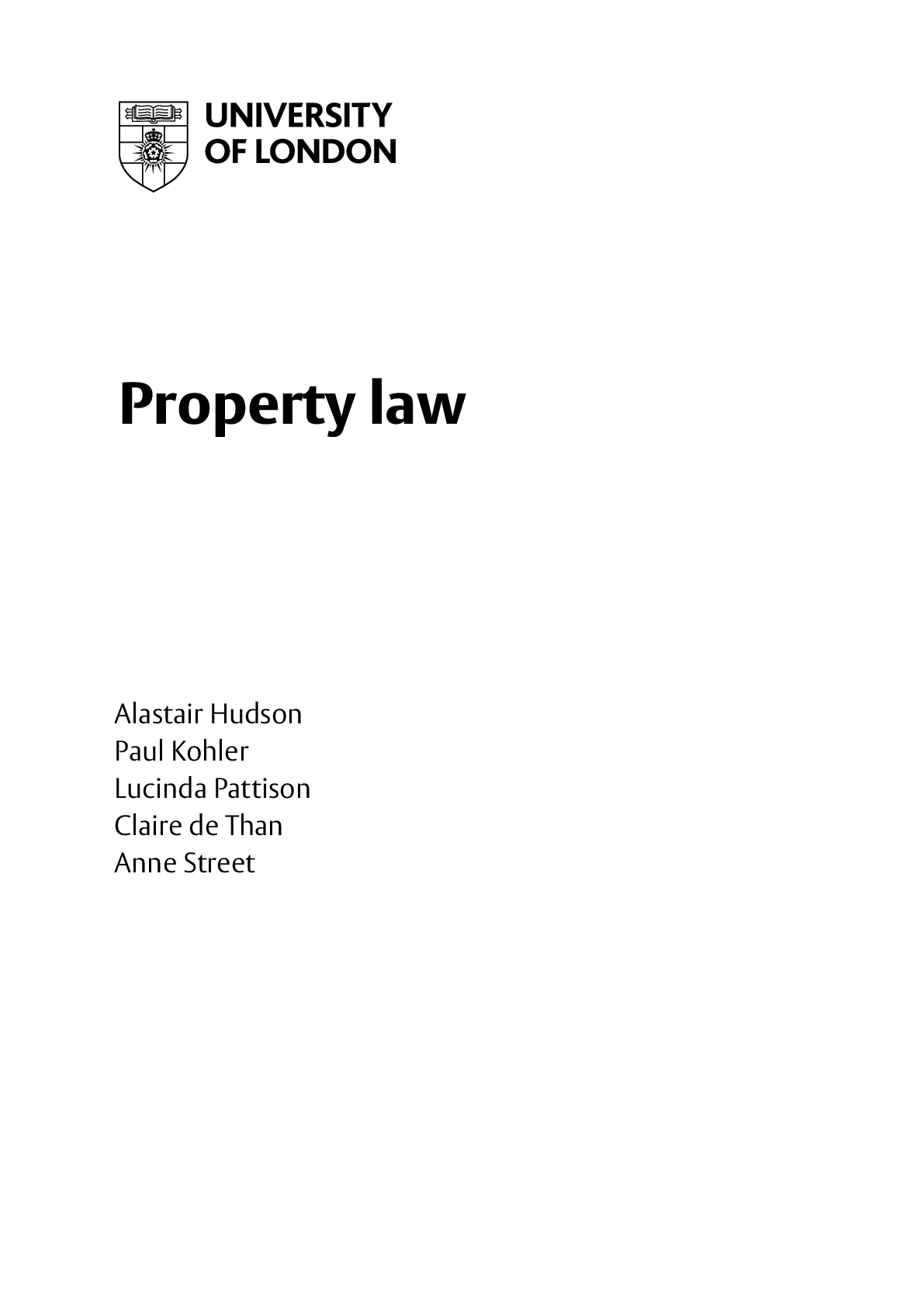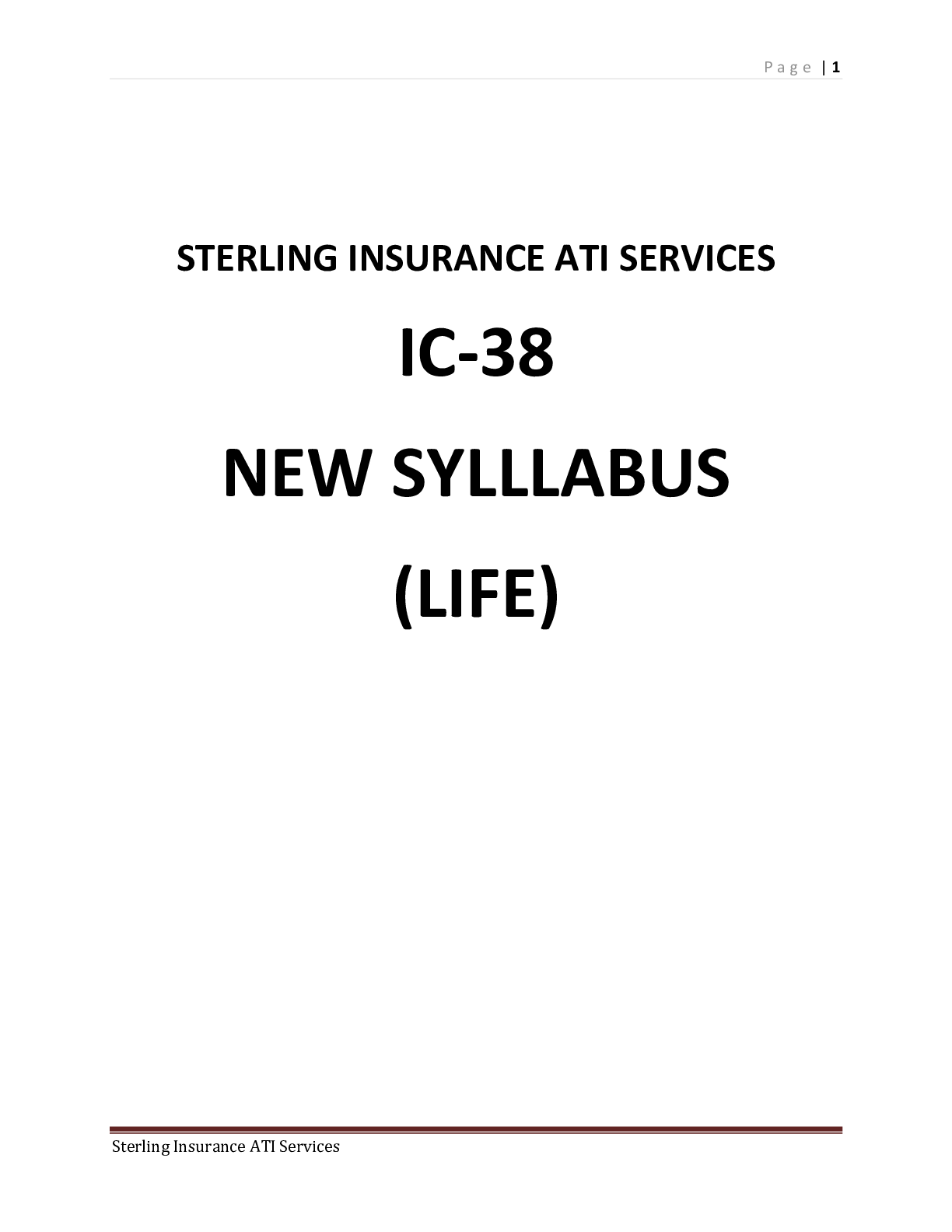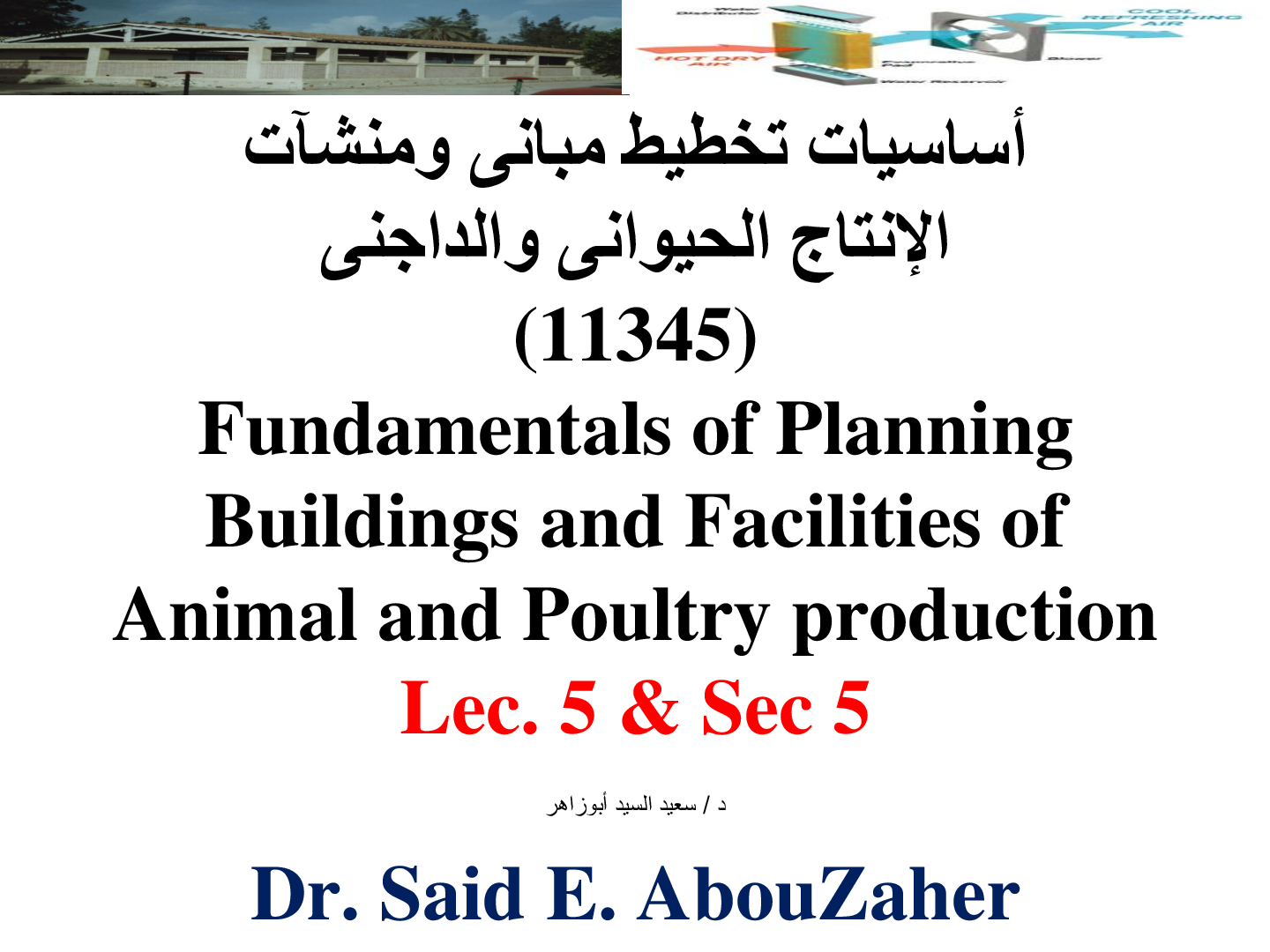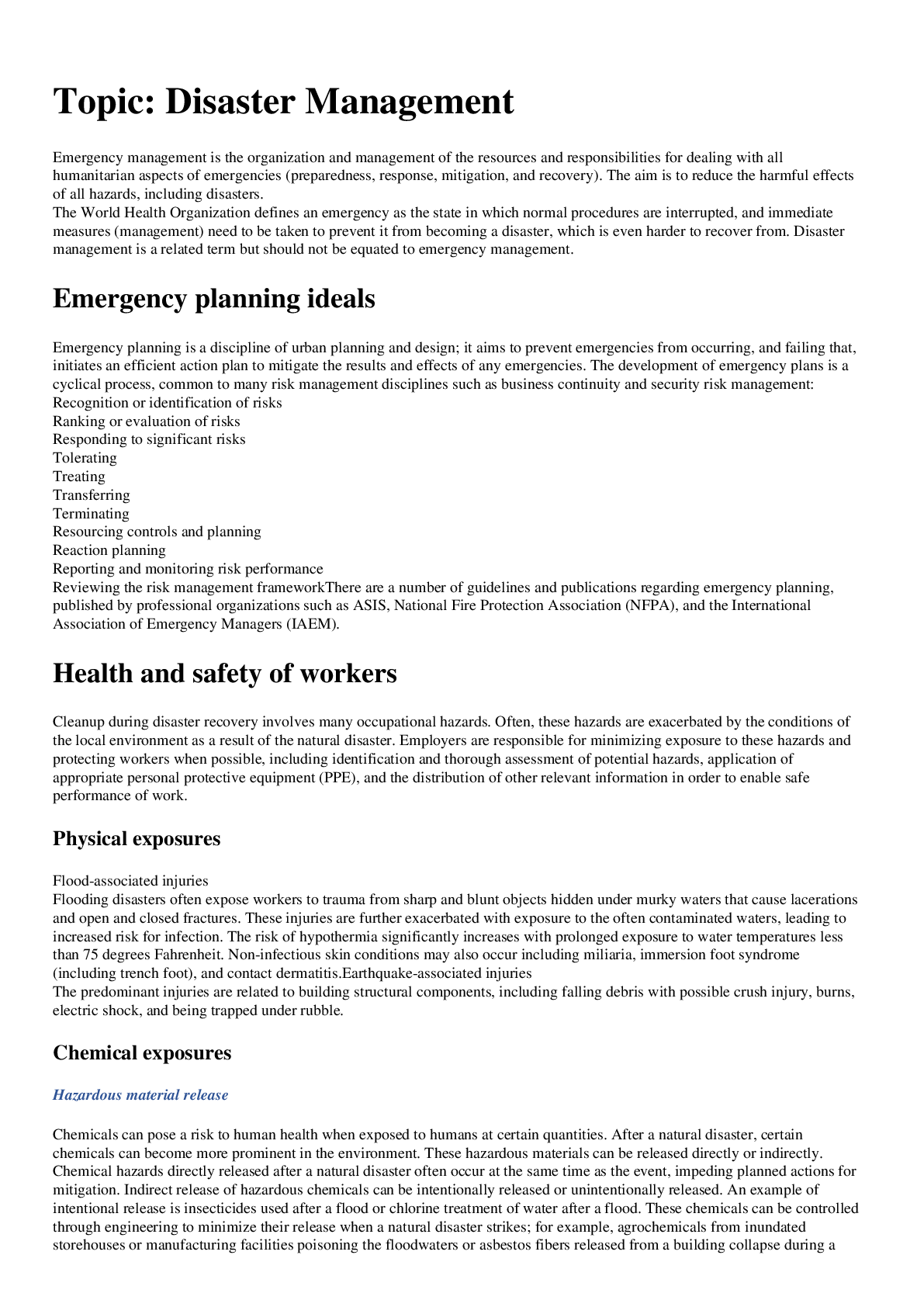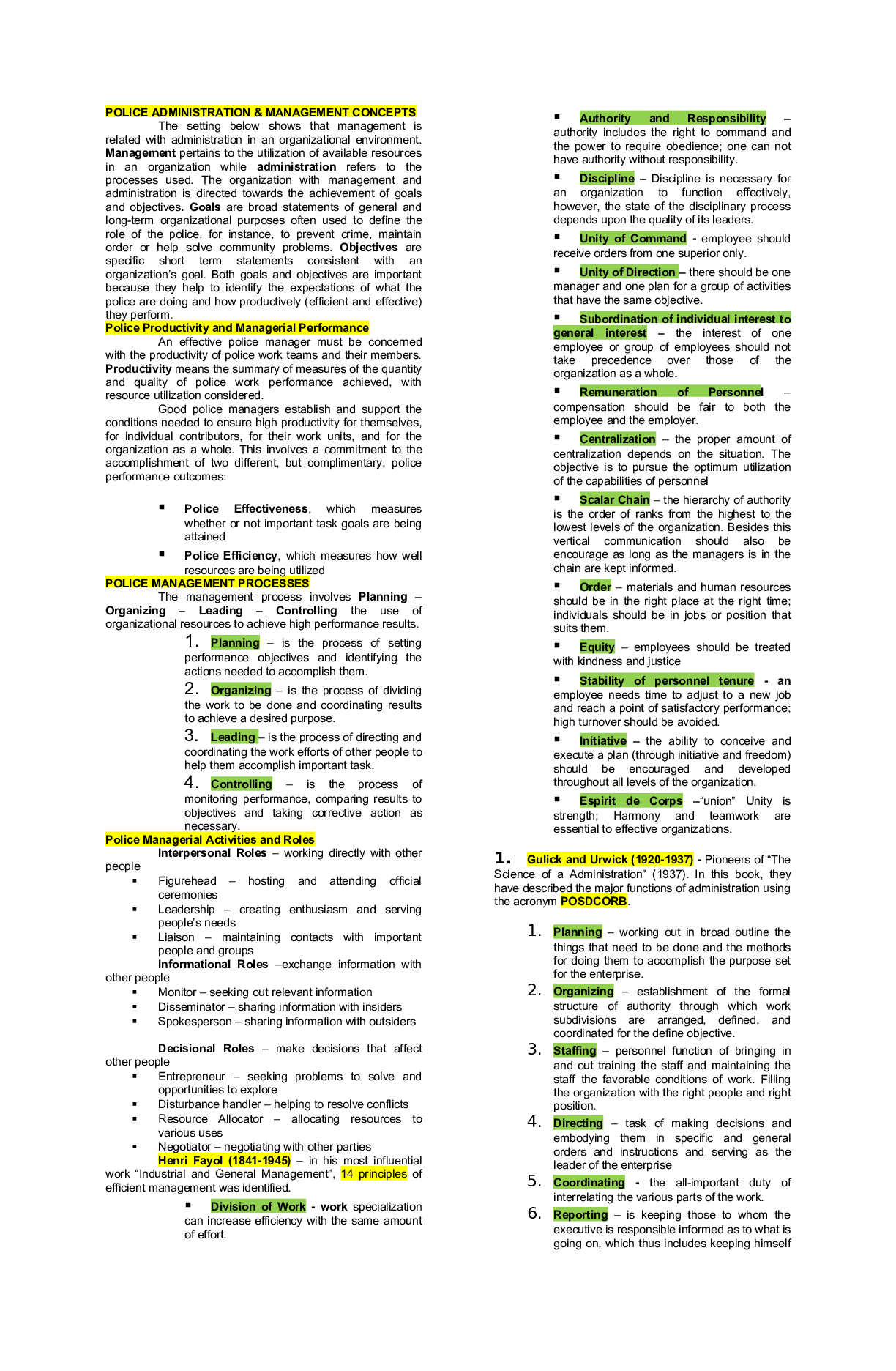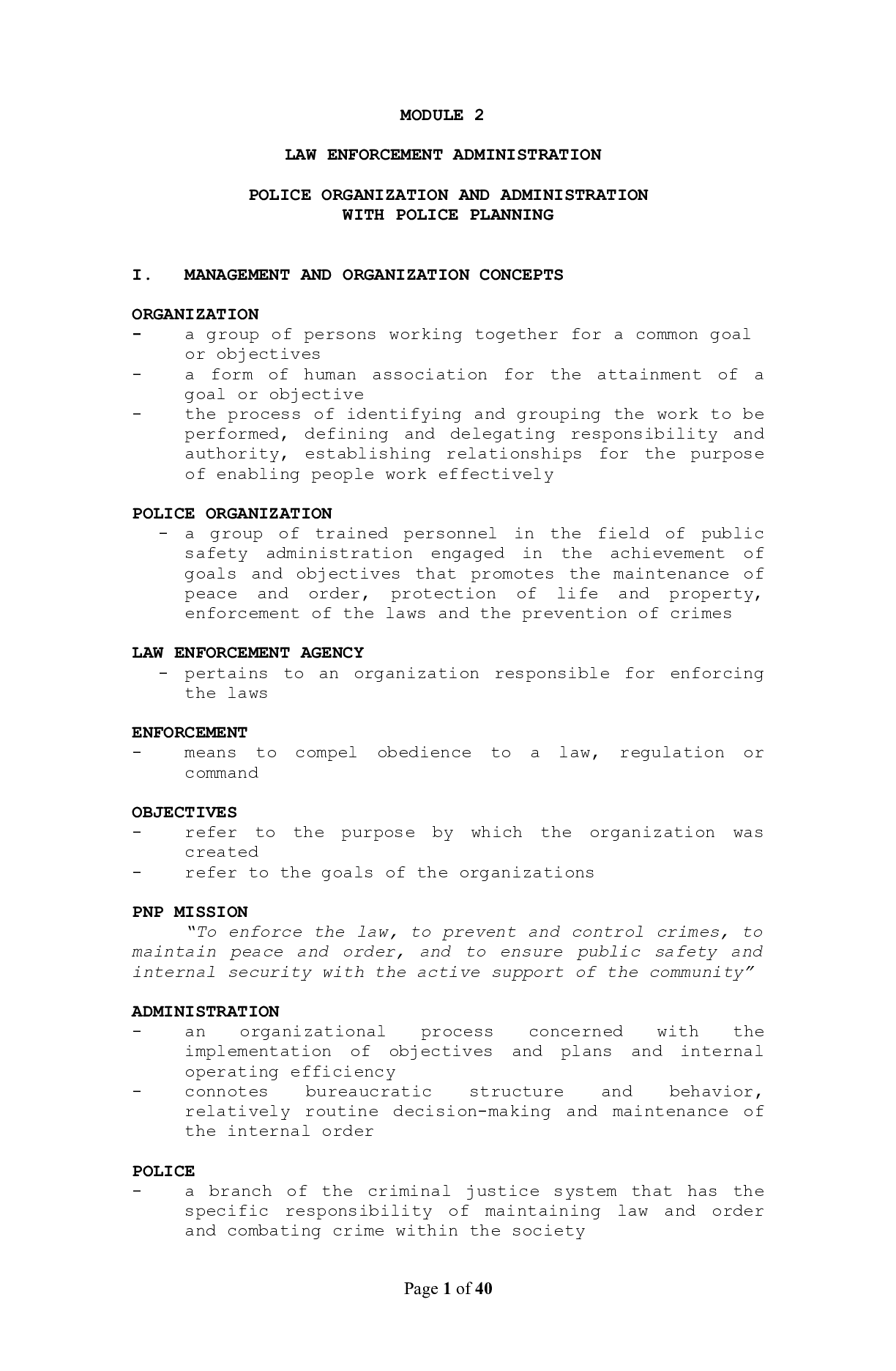Agricultural Studies > Summary > HAND BOOK ON GENERAL AGRICULTURE (ICAR – JRF and Other Competitive Examinations) (All)
HAND BOOK ON GENERAL AGRICULTURE (ICAR – JRF and Other Competitive Examinations)
Document Content and Description Below
CONTENTS Preface 1. Soil Science 1 2. Agriculture/Agronomy 17 3. Genetics and Plant Breeding 39 4. Bio Technology 55 5. Economics 61 6. Agricultural Engineering 83 7. Horticulture 95 8. Bio C... hemistry 117 9. Microbiology 123 10. Plant Physiology 127 11. Practice Papers 139 Agricultural College, Bapatla SC, ST, OBC & Minority Coaching Cell 1 Soil Science Introduction: · The term soil is derived from Latin word “Solum” means ‘Floor’ or ‘Ground’. · Soil is the interphase between atmosphere and the mantle of rocks making up the earth’s crust called “lithosphere”. · Regolith: All loose material above bedrock (the unconsolidated material of weathered rock and soil material). · Soil Survey: Systematic examination, description and classification of soils. · Pedology: Science dealing with genesis, survey, classification and laws of geographic distribution of soils as a body in nature. · Edaphology: It is the study of soils from stand point of higher plants. Rocks: · “Rocks” are defined as the aggregates of one (or) more minerals. Eg: Limestone – aggregation of calcite mineral. · Rocks have no definite chemical, morphological composition or definite symmetrical form like minerals. · Based on origin, rocks are classified as 1. Igneous rocks 2. Sedimentory rocks 3. Metamorphic rocks. · I. Igneous rocks: These are the most abundant and makeup 95% of all the earth crust. Igneous rocks are “oldest rocks” and are also known as “crystalline (or) massive (or) fire rocks. These rocks mainly consist of primary minerals and more than half of the igneous rock is containing “feldspar” minerals. Igneous rocks based on their mode of formation are divided into two groups. a. Extrusive (or) volcanic rocks: These are formed at the surface from the volcanic magma. Eg: Basalt, diorite b. Intrusive (or) plutonic rocks: These are formed by the cooling of the original magma and occur below the earth crust. Eg: Granite. Igneous rocks are also classified based on their chemical composition. a. Acid rocks – contain more than 65% silica – Granite. b. Neutral rocks – contain 50% - 65% silica – Diorite. c. Basic rocks – contain less than 50% silica – Basalt. II. Sedimentary rocks: These rocks are formed through the transportation and deposition of weathered sedimens. The sedimetary rocks are mostly formed through the agency of water, which are called clastic, aqueous or stratified rocks. Based on origin, sedimentary rocks are classfied into 4 groups. 1. Residual sediments: These are formed from the products of weathering in situe that is at same place. Eg: Laterite, bauxite. 2. Mechanical sediments: These are formed due to the deposition of pebbles, sand and silt. Eg: Standstone, shale. Agricultural College, Bapatla SC, ST, OBC & Minority Coaching Cell 2 3. Chemical sediments: These are formed due to evaporation of water, precipitation and consequent accumulation of sediments. Eg: Limestone. 4. Organic sediments: These are fomred due to partial decompostion of organic remains under anaerobic conditions. Eg: Peat III. Metamorphic rocks: These are formed from the rocks by the action of heat and pressure on pre-existing igneous and / or sedimentary rocks. Eg: Sandstone – Quartzite, Shale – Slate, Limestone – Marble, Granite – Gnesiss, Basalt – Schist, Coal – Graphite. Minerals: A mineral is a naturally occuring, homogenous element or inorganic compound that has a definite chemical composition and a characteristic geometric form. The minerals can be identified by many of their physical properties like colour, lustre, streak, hardness etc. · Lustre – general appearance of mineral in reflected light. · Fracture – property of the mineral to break along an irregular surface i.e., surface produced when the mineral breaks in direction other than cleavage plane. · Streak – The colour of the powder of the mineral that is obtained by rubbing the mineral against the unglazed porcelain plate. Soil forming minerals mainly belong to the group of alumino – silicates. Minerals are classified based on quantity (essential and accessory), origin (primary and secondary), specific gravity ( light and heavy) and chemical composition (native elements, oxides, sulphates, sulphides, carbonates, halides, silicates). Primary minerals –They are the original components of the rock, which have not been altered chemically. They are formed from crystallization of magma (molten mass). Eg: Quartz, feldspar etc. Secondary minerals –are resulted from the decomposition and / or alteration of primary minerals. These are formed due to subsequent changes in the rocks. Eg: All clay minerals like kaolinite, illite except micas. Micas are primary minerals. Minerals which form the chief constituent of rock and regraded as the characteristic components of the rock are known as “Essential Minerals”. Eg: Quartz and feldspars. Accessory minerals : The minerals which occur in small quantity in rocks They are not concerned for naming or the nomenclature of the rocks. Such minerals are called as “accessory minerals”. Eg: Apatite, pyrite, magnetite etc. These are not required for the fomration of any rock. Primary silicate minerals: · Quartz – SiO2. · Potash feldspar (Orthoclase) – KAlSi3O8, Soda feldspars (Albite) – NaAlSi3O8. Agricultural College, Bapatla SC, ST, OBC & Minority Coaching Cell 3 · Lime feldspar (Anorthite) – CaAl2Si2O8; Albite and anorthite combine to form plagioclase or soda lime feldspars. · Feldspars are easily attacked by “water containing H2CO3”. The weathering process is called as carbonation. · Plagioclase weathers more rapidly than orthoclase. Orthoclas is commonly occurring feldspar mineral in acid igneous rocks. · Micas are the double silicates of K and Al with or without iron. These are plate like structures. 1. Muscovite (white mica) – KAl3Si3O10(OH)2 2. Biotite (black mica) – occurs both in acidic and basic rocks. 3. Phlogopite – Occurs as a primary mineral in igneous rocks. Biotite is easily weatherable than muscovite. · Pyroxenes and amphiboles: These are the double silicates of Fe, Mg, Al and Ca. · Pyroxene – Augite (dark green) · Amphibole – Hornblende (green - black) · Olivines are the “thin silicates of Fe and Mg”. Eg: Fayalite, forsterite. · Sedimentary rocks have more of secondary minerals. · Muscovite alters to “hydrous mica”. · The insoluble residual material left behind during weathering is called as “saprolite”. · The phenomenon of weathering of surface layer of rocks due to differential co-efficient of expansion and contraction leading to ultimate disintegration is called “exfoliation”. · The material deposited due to melting of ice or glacier in warm regions forms a structureless mass and is termed “moraine or till”. · Chemical weathering of feldspar produces clay mineral. · Basalt decomposes more easily than granite. · Ease of weathering of minerals Quartz > Feldspar > Micas > Olivines > Hornblende. · Weathering is a denstructive process whereas soil formation is a constructive porcess in nature. · Relief: It is defined as the elevations and inequalities of a land surface considered collectively. “Topograpy” is similar to relief to be used on contour maps. · The time devoted by nature to the formation of soil is known as “pedogenic time”. · The process leading to the development of “soil profile” is called “pedogenic process”. · “Humification” is the process of decomposition of raw O.M into humus. This process usually takes place in surface or O horizon. · ‘Eluviation” is the process of removal of constituents by percolation from upper layer to lower layer (wash out). · “Illuviation” is the deposition of dissolved material in the lower layers (wash in). · “Podzole” means ash like under. Podzolisation is humid temperate type of soil forming process. It is opposite to “calcification”. · Laterization is the process of soil formation in tropics and sub-tropics. Laterization is the process of removal of “silica” instead of “sesquioxides” from the upper layers. · Laterization and podzolisation form soils belonging to the group of “pedalfer”. · “Calcification” occurs in areas where there is insufficient rainfall. · The soils which are having high saturation of ‘Ca’ are called as “pedocals”. · “Decalcification” is the removal of ‘Ca’ ions (or) CaCO3 by leaching. · “Cation exchange capacity” is expressed as me/100 g of soil or cmol (p) kg-1 soil. [Show More]
Last updated: 1 year ago
Preview 1 out of 318 pages

Buy this document to get the full access instantly
Instant Download Access after purchase
Buy NowInstant download
We Accept:

Reviews( 0 )
$37.50
Can't find what you want? Try our AI powered Search
Document information
Connected school, study & course
About the document
Uploaded On
Nov 17, 2023
Number of pages
318
Written in
Additional information
This document has been written for:
Uploaded
Nov 17, 2023
Downloads
0
Views
59


